Your Network with Endpoint Security Management

What is Endpoint Security Management?
Introduction to Endpoint Security Management
Endpoint Security Management is an essential framework in the realm of information security that focuses on securing the entry points of end-user devices such as desktops, laptops, and mobile devices from being exploited by malicious campaigns and cyber threats. As organizations increasingly adopt mobile and remote working arrangements, the significance of robust endpoint security measures has skyrocketed. This segment of security management is pivotal in creating a resilient barrier against unauthorized access to enterprise networks and sensitive data.
Definition of Endpoint Security Management
Endpoint Security Management refers to the process of securing the endpoints or entry points of end-user devices like computers, mobile phones, and tablets against exploitation by malicious actors and software. It involves the deployment of security solutions that can detect, analyze, and respond to emerging threats at these endpoints. The primary goal of endpoint security management is to ensure that these devices adhere to a definite security standard to protect the network they connect to from various forms of cyber threats, including viruses, ransomware, and spyware.
Key Concepts of Endpoint Security Management
Endpoint Security Management is built upon several key concepts that ensure comprehensive protection for networked systems. Firstly, it employs endpoint protection platforms (EPP), which provide a suite of security solutions that defend against malware and monitor systems in real-time to detect unusual behaviors that could signify an attack. Secondly, Endpoint Detection and Response (EDR) systems offer advanced functionalities, including detailed forensic analysis and automatic response actions, which are crucial for identifying and mitigating threats post-compromise.
Another fundamental aspect of Endpoint Security Management is the practice of regular patch management and vulnerability assessments, which are critical for maintaining the integrity of the endpoint devices. By ensuring that all devices are regularly updated with the latest security patches and that vulnerabilities are assessed and mitigated promptly, organizations can drastically reduce their susceptibility to attacks.
Additionally, the integration of advanced technologies such as machine learning and behavioral analysis enhances the effectiveness of endpoint security solutions by enabling them to predict and prevent new and evolving threats based on previous patterns and behaviors.
Why Is Endpoint Security Management Important?
Endpoint Security Management is crucial because endpoints are often the first line of attack cybercriminals use to enter a network. With the increasing number of endpoint devices used in organizations, including mobile devices, laptops, and IoT devices, the attack surface for potential threats has expanded dramatically. The diversity and mobility of these devices make them particularly vulnerable to attacks, which can lead to unauthorized access, data breaches, and significant financial and reputational damage to organizations.
Moreover, the shift towards remote work has heightened the importance of robust endpoint security. Employees accessing corporate networks from various locations outside the traditional security perimeters necessitate a more dynamic approach to security that can adapt to various environments while maintaining high-security standards. Endpoint Security Management ensures that all devices comply with security policies and are monitored for threats, regardless of their location, thus maintaining the integrity of corporate data and systems.
How do Endpoint Security Systems Work?
Understanding Endpoints and Their Role in Network Security
Endpoints are the devices that serve as points of access to an organization’s network and can include computers, mobile devices, servers, and IoT devices. Each endpoint serves as a potential entry point for security threats. In network security, securing these endpoints is critical because they are frequently the target of initial compromise or attack. If an endpoint is compromised, it can be used to infiltrate the entire network. Therefore, understanding and securing endpoints is essential to protect against data breaches and maintain network integrity.
Endpoint Security Management vs. Network Security
While endpoint security management focuses on protecting individual devices within the network, network security aims at protecting the data flowing across the network. Endpoint security is a component of network security but with a narrower focus on the devices at the edge of the network. The distinction lies in the approach and technologies used; endpoint security includes specific solutions tailored to device-level protection, such as antivirus software, firewalls, and more advanced threat prevention technologies. Network security includes measures like intrusion detection systems, secure gateways, and traffic analysis tools, which provide a broader level of protection for all aspects of the network.

Endpoint Identification and Authentication
Endpoint identification and authentication are crucial for maintaining endpoint security. These processes ensure that only authorized devices and users can access the network and its resources. Endpoint identification involves recognizing each device within the network and associating it with specific user profiles and credentials. Authentication takes this a step further by verifying the identity of the device and user, typically through passwords, biometrics, or other multifactor authentication methods. Together, these mechanisms help prevent unauthorized access and ensure that any device connecting to the network is permitted, a foundational aspect of endpoint security management. This helps maintain operational integrity and protects sensitive data from being accessed unlawfully.
Threat Detection and Analysis
Threat detection and analysis are core functions of endpoint security systems. These processes involve scanning and monitoring endpoint devices to detect unusual behavior or patterns indicative of malicious activities. Modern endpoint security solutions leverage advanced technologies like machine learning and artificial intelligence to enhance detection capabilities. They analyze vast amounts of data from endpoint activities to identify anomalies that may elude traditional detection methods. Once a potential threat is detected, the system analyzes it to determine its nature, origin, and potential impact on the network.
Security Policy Enforcement
Security policy enforcement ensures that all endpoint devices comply with the organization's security standards. Endpoint security systems enforce policies by controlling access to network resources and restricting activities based on the roles and privileges assigned to each device and user. This may include implementing security configurations, blocking unauthorized applications, and enforcing encryption protocols. By ensuring that all endpoints adhere to established security policies, organizations can significantly reduce their vulnerability to cyber-attacks.
Incident Response and Mitigation
A rapid response is crucial to mitigate risks and limit damage when a security breach or threat is detected. Endpoint security systems have automated response capabilities that can isolate infected devices, remove malicious files, and apply patches as needed. These systems also facilitate incident management processes by providing tools for IT teams to assess the scope of the breach, execute remediation plans, and recover affected systems. This quick and coordinated response is vital to maintaining business continuity and protecting organizational assets.
Continuous Monitoring and Reporting
Continuous monitoring is critical to endpoint security, ensuring ongoing protection and operational integrity. Endpoint security systems constantly monitor network traffic and endpoint activities to identify and respond to threats in real time. This surveillance helps organizations avoid potential security breaches by providing timely and accurate information about their security posture. Additionally, these systems generate detailed reports that offer insights into threat patterns, system vulnerabilities, and compliance with security policies. These reports are invaluable for auditing and making informed decisions about future security strategies and investments.
What Devices are Considered Endpoints in a Network?
Endpoint Devices
In the context of network security, an endpoint is any device that is connected to the network and communicates back and forth with it. These devices can vary widely but typically include:
- Computers: Desktops and laptops that users interact with daily.
- Mobile Devices: Smartphones and tablets that access the network remotely.
- Servers: Both on-premise and cloud servers that store data and run applications.
- IoT Devices: Connected gadgets like smart thermostats, security cameras, and wearable technologies.
- Network Hardware: Devices like routers and switches help with data routing and network connectivity.
Each device is a potential entry point for security threats, making them critical components to secure within an organization’s IT infrastructure.
Common Types of Threats Targeted at Endpoints
Endpoints are frequently targeted by cybercriminals due to their accessibility and the valuable data they hold. Some common types of threats include:
- Malware: This includes viruses, worms, trojans, and ransomware. It is designed to damage or disable endpoints, steal data, or cause disruption.
- Phishing Attacks: These involve deceptive emails or messages designed to trick users into providing sensitive information or downloading malware.
- Man-in-the-Middle (MitM) Attacks: These occur when attackers intercept communications between two endpoints to eavesdrop on or alter the data being exchanged.
- Zero-Day Exploits: These exploit previously unknown vulnerabilities in software or hardware that developers have not yet patched.
- Drive-by Downloads: These refer to the unintentional download of malicious code to an endpoint due to visiting a compromised website, often without the user’s knowledge.
Components of Endpoint Security Management
Endpoint Security Management involves several critical components that work together to protect endpoints from various cyber threats. Each component plays a unique role in ensuring the security of devices within a network.

Antivirus and Anti-malware Software
Antivirus and anti-malware software form the first line of defense in any endpoint security strategy. These tools are designed to detect, quarantine, and remove malicious software from infected devices. They operate based on a combination of signature-based detection, which checks for known threat patterns, and heuristic analysis, which identifies new or unknown malware variants by examining behavior patterns that deviate from the norm.
Firewall Protection
Firewalls are barriers between trusted internal networks and untrusted external networks, such as the Internet. They regulate network traffic based on predetermined security rules and help prevent unauthorized access to network resources. Firewalls can be hardware-based, software-based, or a combination of both, and they are essential for controlling what enters and leaves the network.
Intrusion Prevention Systems (IPS)
Intrusion Prevention Systems (IPS) are network security appliances that monitor network and/or system activities for malicious activities. The main functions of an IPS are to identify malicious activity, log information about this activity, attempt to block/stop it and report it. IPS can also correct CRC, unfragment packet streams, prevent known attacks by filtering, and use anomaly detection to catch new threats.
Endpoint Detection and Response (EDR)
Endpoint Detection and Response (EDR) solutions are advanced security tools that go beyond traditional antivirus software. They provide comprehensive visibility into the endpoint environment and can detect sophisticated threats. EDR systems continuously monitor and gather data to provide security analysts with the tools to detect threats, investigate the scope and root cause, and respond to incidents appropriately.
Data Loss Prevention (DLP)
Data Loss Prevention (DLP) technologies prevent users from sending sensitive information outside the corporate network. DLP systems can be set to detect and block the transmission of sensitive data, which may include financial data, personally identifiable information (PII), or intellectual property. DLP solutions are crucial for compliance with regulatory requirements and for protecting against data breaches.
Patch Management
Patch management is the process of managing the acquisition, testing, and installation of updates to software on existing applications, software systems, or firmware while ensuring that patches are installed properly, testing systems after installation, and documenting all associated procedures. Keeping software up to date and patched is vital to correcting security vulnerabilities and improving the software's functionality.
Application Control
Application control is a security practice that restricts unauthorized applications from executing in network environments. This control helps prevent harmful applications or software from causing damage or stealing data. It involves creating policies that whitelist or blacklist applications, ensuring only approved applications are allowed to run on the organization's devices. Application control is particularly effective in mitigating the risk of zero-day attacks by blocking unfamiliar software until it can be tested and deemed safe.
Network Access Control (NAC)
Network Access Control (NAC) systems enhance endpoint security by enforcing security policies on devices that attempt to access network resources. NAC solutions can prevent unauthorized access, enforce security compliance, and segment the network based on user roles or device type. By examining the state of a device before it connects and continually after access is granted, NAC helps ensure that only compliant and authenticated devices can use network resources.

Mobile Device Management (MDM)
Mobile Device Management (MDM) is a technology used to manage, monitor, and secure employees' mobile devices deployed across multiple mobile service providers and mobile operating systems in the organization. MDM is a core component of enterprise mobility management (EMM), which also includes mobile application management, identity and access management, and enterprise file sync and share. The goal of MDM is to optimize the functionality and security of mobile devices within the enterprise while simultaneously protecting the corporate network.
Encryption
Encryption is a critical component of endpoint security that protects data confidentiality and integrity by encoding information, making it unreadable to unauthorized users. This process is essential for safeguarding data at rest on endpoints and securing data in transit as it moves across networks. Encryption helps prevent data breaches by ensuring that, even if data is intercepted, it cannot be accessed without the necessary decryption key.
M365 Security
M365 (Microsoft 365) security encompasses a range of security practices designed to protect enterprises using Microsoft's Office software and services suite. It includes threat protection, information protection, identity and access management, and security management across all M365 applications. Implementing M365 security measures is crucial for protecting organizational data within the productivity suite, which includes email, documents, and communication tools.
DNS Security
DNS security involves measures to protect the Domain Name System (DNS), which translates domain names like www.example.com into IP addresses. DNS attacks can redirect users to malicious sites or intercept data. Enhancing DNS security can involve DNSSEC (DNS Security Extensions), which adds layers of authentication to DNS responses, preventing DNS spoofing and man-in-the-middle attacks.
Data Theft Protection
Data theft protection involves technologies and policies to prevent sensitive or confidential information from being stolen or accessed by unauthorized individuals. This includes data encryption, access controls, and intrusion detection systems. Data theft protection is critical for maintaining the confidentiality and integrity of personal and corporate information and reducing the risk of identity theft, financial fraud, and other malicious activities.
Endpoint Security Management Policies
Endpoint Security Management Policies are essential guidelines that organizations develop to ensure that all endpoint devices comply with specific security standards to protect network integrity and sensitive data. These policies typically cover aspects such as device management, access controls, encryption, and software requirements. They also dictate how devices should be monitored, what types of security software must be installed, and how updates and patches are managed. Implementing clear and comprehensive endpoint security management policies helps organizations enforce consistent security practices, reduce vulnerabilities, and mitigate risks associated with endpoint devices.
How Endpoint Security Solutions Work
Endpoint security solutions provide comprehensive protection for networked devices by integrating various technologies and methods. At their core, these solutions focus on prevention, detection, and response:
- Prevention includes deploying antivirus software, firewalls, and application controls to block malicious activities and unauthorized access.
- Detection: Solutions continuously monitor endpoint activities to identify unusual behavior or signs of a security breach, using advanced technologies such as machine learning and behavior analytics.
- Response: Upon detecting a threat, these systems can initiate automated responses, such as isolating the affected device, deleting malicious files, or alerting security personnel for further investigation.
These solutions also often include management platforms that provide centralized visibility and control over all endpoint devices, making it easier for IT security teams to administer security policies and ensure organizational compliance.
Endpoint Security Management vs Traditional Antivirus Solutions
While traditional antivirus solutions and endpoint security management both aim to protect devices and networks from malware, their approaches and capabilities differ significantly:
- Scope of Protection: Traditional antivirus solutions are primarily designed to detect and remove malware based on known signatures. They are effective against common threats but often fall short against zero-day exploits, advanced persistent threats (APTs), and sophisticated malware techniques. On the other hand, endpoint security management encompasses a broader range of protection measures, including advanced threat prevention, data loss prevention, and intrusion detection systems.
- Behavioral Analysis: Unlike traditional antivirus software, endpoint security solutions typically incorporate behavioral analysis and machine learning to identify and respond to anomalies in user behavior and device activity. This allows them to detect and mitigate threats that do not match known malware signatures.
- Integration and Automation: Endpoint security management solutions offer greater integration with existing security systems and IT infrastructure, providing a more cohesive approach to security. They also feature higher degrees of automation regarding threat detection and response, reducing the need for manual intervention and speeding up response times.
- Compliance and Reporting: Comprehensive endpoint security solutions often include compliance management and reporting tools, which are crucial for adhering to industry regulations and conducting audits. Traditional antivirus solutions usually do not offer these capabilities.
Challenges and Threats in Endpoint Security Management
Endpoint security management faces many challenges and threats that can undermine the integrity of corporate networks and data. These challenges require ongoing attention and adaptation of security strategies to mitigate risks effectively.
Overview of Common Endpoint Security Threats
Endpoint security threats can vary widely, but some of the most common include:
- Malware and Ransomware: Malicious software continues to be a significant threat to endpoints, capable of stealing data, encrypting files for ransom, or causing other harmful effects.
- Phishing Attacks: Phishing attacks often target employees through deceptive emails or messages and aim to steal credentials or install malware.
- Zero-Day Exploits: These occur when attackers exploit previously unknown vulnerabilities before the software vendor has issued a fix.
- Man-in-the-Middle Attacks: These attacks intercept the communication between two systems to steal or manipulate data.
- Botnets: Botnets can take control of endpoints and use them to launch large-scale attacks, such as DDoS attacks or spam campaigns.
Increasing Complexity of Endpoints
The diversity and complexity of endpoint devices have grown with the proliferation of mobile devices, IoT devices, and remote work environments. Each type of device introduces unique security challenges and expands the attack surface that organizations must defend. This complexity makes it difficult to maintain consistent security measures and policies across all devices, increasing the likelihood of vulnerabilities.
Evolving Cyber Threat Landscape
As technology evolves, so do cybercriminals' tactics, techniques, and procedures. Cyber threats are becoming more sophisticated and harder to detect. Adversaries continuously develop new methods to exploit vulnerabilities, bypass security measures, and remain undetected within networks for extended periods. Keeping up with these rapid developments requires security teams to be proactive and innovative in their approach to endpoint security.
Insider Threats
Insider threats are a significant concern for organizations as they can involve employees, contractors, or business partners misusing their access to corporate resources, intentionally or unintentionally. These threats can be challenging to detect because they come from within the organization, often bypassing traditional security measures designed to defend against external attacks.
Lack of User Awareness and Training
Human firewall is one of the most significant vulnerabilities in any security system. Lack of awareness and inadequate training on security best practices can lead employees to inadvertently compromise security through careless actions such as mishandling sensitive information, using weak passwords, or falling for phishing scams. Regular training and awareness programs ensure all users understand the risks and adhere to security policies to protect organizational assets.
Bring Your Own Device (BYOD) Policies
BYOD policies allow employees to use their personal devices for work purposes, but they introduce a significant security challenge. Personal devices may not adhere to the same security standards as company-issued hardware, making them more susceptible to attacks. These devices often have a mix of personal and corporate data, complicating data management and increasing the risk of data leaks. Managing a secure BYOD environment requires robust security policies, effective device management solutions, and continuous monitoring to ensure compliance and protect corporate data.
Remote and Mobile Workforce
The shift towards a remote and mobile workforce has expanded the boundaries of corporate networks and introduced new vulnerabilities. Employees working from various locations often use unsecured public networks, which can expose sensitive corporate data to interception by cybercriminals. Furthermore, the physical security of devices becomes a concern, as lost or stolen devices can provide direct access to unauthorized users. To mitigate these risks, organizations need to implement secure virtual private network (VPN) connections, enforce strong authentication methods, and educate employees on security best practices when working remotely.
Patch Management Issues
Effective patch management is crucial for maintaining the security of endpoint devices, as it involves updating software to fix vulnerabilities that could be exploited by attackers. However, patch management can be challenging due to the sheer number of devices and the variety of software used within an organization. Delays in applying patches can leave systems vulnerable to attacks. Furthermore, patches themselves can sometimes introduce new issues, requiring thorough testing before widespread deployment. Automating the patch management process and prioritizing critical updates can help alleviate these issues.

Phishing and Social Engineering Attacks
Phishing and other forms of social engineering remain some of the most common and effective methods attackers use to compromise endpoint security. These attacks exploit human psychology rather than technological vulnerabilities, tricking users into providing sensitive information or downloading malware. The sophistication of these attacks is increasing, making them harder to detect with traditional security measures. Organizations must invest in advanced email filtering technologies, conduct regular security awareness training, and implement multi-factor authentication (MFA) to reduce the risk of successful phishing attacks.
Endpoint Security Management Solutions
To effectively combat the challenges and threats to endpoint security, organizations deploy various solutions designed to protect, detect, and respond to potential risks. Here’s an overview of the key solutions in endpoint security management:
Endpoint Protection Platforms (EPP)
Endpoint Protection Platforms (EPP) are comprehensive security solutions that provide a suite of security capabilities designed to prevent known malware and attacks across all endpoint devices. EPPs typically include antivirus, anti-spyware, firewall, and application control capabilities. They primarily focus on preventing external threats from breaching the endpoint by leveraging large databases of known threat signatures and employing heuristic analysis to detect deviations from normal activities. Modern EPP solutions may also integrate with cloud-based analytics and threat intelligence to enhance their detection capabilities.
Endpoint Detection and Response (EDR)
Endpoint Detection and Response (EDR) solutions represent a more advanced layer of security designed to address threats that bypass traditional prevention mechanisms. EDR tools continuously monitor and collect data from endpoints, providing detailed visibility into their security state. This data enables security teams to quickly identify, investigate, and respond to threats. EDR solutions offer capabilities such as real-time monitoring, threat hunting, and incident response tools that allow for the containment and remediation of threats at the endpoint level. They are crucial for detecting sophisticated malware, insider threats, and lateral movement within the network.
Mobile Threat Defense (MTD)
Mobile Threat Defense (MTD) solutions are specifically designed to protect mobile devices from threats. MTD provides continuous, dynamic protection against attacks that target operating systems, applications, and networks. These solutions monitor and analyze device behavior, network connections, and application performance to detect threats like network exploits, phishing attacks, and malicious apps. MTD is essential for organizations with a large mobile workforce, as it extends security controls beyond the traditional perimeter and into mobile devices used in remote or BYOD scenarios.
Network Access Control (NAC)
Network Access Control (NAC) solutions enforce security policies by controlling access to network resources based on the user’s compliance with defined security policies. NAC systems can assess the security posture of devices as they attempt to connect to the network, ensuring that only compliant devices with the necessary security configurations and software updates are allowed access. NAC solutions also provide capabilities for guest management, profiling of endpoints, and integration with other security systems like intrusion prevention systems (IPS) and security information and event management (SIEM) to enhance overall security visibility and control.
Secure Web Gateways (SWG)
Secure Web Gateways (SWG) are critical components in endpoint security. They provide comprehensive web filtering to block malicious internet traffic and enforce company policies. SWGs inspect web traffic for malicious content and unwanted software, preventing such risks from reaching endpoint devices. They also often include data loss prevention (DLP) capabilities to monitor and control data transmitted to and from the organization. By filtering out unwanted or dangerous material before it reaches the endpoints, SWGs play a crucial role in preventing web-based attacks.
Virtual Desktop Infrastructure (VDI)
Virtual Desktop Infrastructure (VDI) is a technology that hosts desktop environments on a centralized server and delivers them to end-users over a network. This setup allows IT departments to control better and more secure endpoints, as the computing occurs in a data center, not on the local device. VDI is particularly beneficial in enhancing security because it can isolate sensitive applications and data from the end user's physical device, reducing the risk of local data breaches. Furthermore, it simplifies the management of software updates and patches, ensuring all virtual desktops are up-to-date with the latest security measures.
Managed Detection and Response (MDR)
Managed Detection and Response (MDR) is a specialized service that provides organizations with threat detection, incident response, and continuous monitoring capabilities. MDR providers use a combination of technology, processes, and expertise to monitor network and endpoint behaviors, detect malicious activity, and respond to security incidents. This service is particularly beneficial for organizations that do not have the resources to maintain their own 24/7 security operations center. MDR helps bridge the gap by providing expert analysis and response to threats, thereby enhancing the organization's ability to mitigate potential security issues quickly.
Cloud-based Endpoint Security
Cloud-based endpoint security refers to the delivery of security services via the cloud. This model allows for real-time threat intelligence updates and scalable resources to protect endpoints anywhere they might be. Cloud-based solutions are not restricted by geographic or hardware limitations, providing flexible and dynamic security that adapts to new threats as they arise. Cloud security providers can also deploy patches and updates centrally, ensuring all connected devices are protected with the latest defenses against threats. This setup is ideal for organizations with a remote workforce, as it provides consistent security policies across all devices, regardless of location.
Endpoint Security Management Best Practices
Adopting best practices in endpoint security management is essential for protecting against the evolving threats that target corporate networks. Implementing these strategies can significantly enhance the security posture of an organization.

Regularly Update and Patch Systems
One of the most critical practices in maintaining endpoint security is regularly updating and patching all software and operating systems. Keeping software up to date ensures that vulnerabilities are addressed before they can be exploited by attackers. Automated patch management tools can help streamline this process, ensuring updates are consistently applied across all endpoints without manual intervention. This secures the endpoints and reduces the window of opportunity for cybercriminals to exploit known vulnerabilities.
Implement Least Privilege Access Controls
Access controls based on the principle of least privilege ensure that users and applications have only the minimum level of access necessary to perform their functions. This reduces the risk of accidental or malicious misuse of privileges that could lead to security breaches. Implementing strong access control policies and regularly reviewing user permissions can help prevent data leakage and limit the damage that can be done if an account is compromised.
Conduct Regular Security Training and Awareness Programs
Human error remains one of the largest security vulnerabilities in any organization. Regular training and security awareness programs are essential to educate employees about the latest cybersecurity threats and best practices. This includes training on recognizing phishing attempts, the importance of using strong passwords, and properly handling sensitive information. A well-informed workforce is a critical line of defense in preventing security incidents.
Deploy Multi-Factor Authentication (MFA)
Multi-factor authentication (MFA) adds an additional layer of security by requiring users to provide two or more verification factors to gain access to a resource such as an application, online account, or a VPN. By combining something they know (a password) with something they have (a security token or a smartphone app to approve authentication requests), MFA significantly decreases the likelihood of unauthorized access, even if a password is compromised.
Encrypt Sensitive Data on Endpoints
Encryption should be a standard practice for protecting sensitive data stored on endpoints. Encrypting files, folders, or entire drives renders data unreadable to unauthorized users, even if they gain access to the physical device. This is particularly important for devices such as laptops and mobile devices susceptible to theft or loss. Strong encryption standards ensure that sensitive data remains confidential and intact, safeguarding it from breaches and exposure.
Use Advanced Endpoint Detection and Response (EDR) Tools
Advanced Endpoint Detection and Response (EDR) tools are essential for identifying, analyzing, and responding to threats that evade traditional security measures. EDR tools provide real-time monitoring and record endpoint system activities with a level of detail that allows security analysts to detect subtle, unusual patterns that may indicate a breach. These tools also offer capabilities for threat hunting and incident investigation, enabling organizations to respond swiftly to mitigate the impact of attacks.
Monitor and Manage Endpoints Continuously
Continuous monitoring of endpoints is crucial for detecting and responding to threats as they occur. Endpoint management tools can automate the process of monitoring the health, performance, and security status of all connected devices. This includes checking for unauthorized software installations, enabling security features, and verifying that antivirus signatures are up-to-date. Continuous management ensures that endpoints remain compliant with security policies throughout their lifecycle, reducing the window of opportunity for attackers.
Establish and Enforce Security Policies
Establishing and enforcing comprehensive security policies is fundamental to maintaining control over endpoint security. These policies should cover aspects such as acceptable use, password requirements, security settings, and compliance standards. They must be clearly communicated to all employees and enforced through automated tools to ensure consistency. Regularly updating these policies to reflect new security challenges and regulatory requirements is vital to keeping an organization secure.
Perform Regular Security Assessments and Audits
Regular security assessments and audits help identify vulnerabilities and compliance issues that could compromise endpoint security. These assessments should include penetration testing, vulnerability scanning, and evaluation of security policies and procedures. Audits provide insights into the effectiveness of the existing security measures and highlight areas that need improvement, ensuring that the security infrastructure evolves to meet emerging threats.
Have an Incident Response Plan in Place
A well-defined incident response plan is crucial for effective and timely response to security incidents. The plan should outline specific steps to be taken in the event of a security breach, including how to contain the breach, assess the damage, notify affected parties, and restore services. Regularly testing and updating the incident response plan is essential to ensure it remains effective in the face of new cybersecurity threats.
Endpoint Security Management in Remote Work Environments
The shift towards remote work has presented unique challenges for endpoint security management. Organizations must adapt their security strategies to accommodate an increasingly distributed workforce while maintaining strong security standards. Here are key practices that can help ensure robust endpoint security in remote work environments:
Endpoint Security Management Strategies for Remote Work
To effectively manage endpoint security in a remote setting, organizations should adopt a layered security approach that includes:
- Secure Configuration: Ensure all remote devices are configured with the necessary security settings before deployment.
- Data Encryption: Encrypt sensitive data stored on remote devices to protect it in case of loss or theft.
- Access Controls: Implement strict access controls to ensure only authorized users can access sensitive resources.
- Regular Audits: Conduct regular audits of remote devices to ensure compliance with security policies.
These strategies help mitigate the risks associated with remote endpoints and ensure that employees can work securely from anywhere.
Use of Virtual Private Networks (VPNs)
Virtual Private Networks (VPNs) are critical for secure remote work. They create a secure, encrypted tunnel for data to travel between a remote user and the company network, protecting sensitive information from interception by unauthorized parties. VPNs also allow remote employees to access network resources safely as if they were physically on-site, which is crucial for maintaining productivity and security in remote work setups.
Endpoint Security Software Updates and Patch Management
Keeping endpoint security software up-to-date is vital in a remote work environment. Automated software updates and patch management tools protect all remote devices against the latest threats. Organizations should prioritize updates related to security enhancements and vulnerability patches. Maintaining a regular patch schedule and using management platforms that can deploy updates remotely helps secure endpoints against attackers' exploitation.
Enhanced Authentication Methods
Enhanced authentication methods, such as multi-factor authentication (MFA), are more important than ever in remote work environments. MFA requires users to provide two or more verification factors to gain access to resources, adding an additional layer of security against unauthorized access. This is particularly effective in protecting against phishing attacks and credential theft, which are common in remote settings.
Endpoint Security Management and Intellectual Property Protection
Protecting intellectual property (IP) is crucial for maintaining any organization's competitive edge and operational integrity. Endpoint security management is vital in safeguarding sensitive data against unauthorized access and cyber threats. Here are effective measures and technologies that organizations can employ to protect their intellectual property:
Endpoint Security Measures for Protecting Sensitive Data
Implementing robust endpoint security measures is essential to protect sensitive data from being compromised. This includes:
- Application Whitelisting: Only allow trusted applications to run on network devices.
- Regular Security Audits: Conduct thorough audits and reviews to identify and rectify security vulnerabilities.
- Advanced Threat Protection: Use solutions that detect and mitigate sophisticated malware and ransomware attacks.
- Geolocation Technologies: Monitor and manage the geographical location of device access to prevent unauthorized access from high-risk locations.
These measures help ensure that endpoints remain secure and that intellectual property is protected from internal and external threats.
Data Loss Prevention (DLP) Tools
Data Loss Prevention (DLP) tools are critical for protecting intellectual property. DLP systems monitor, detect, and block the transfer of sensitive information outside the corporate network. They can be configured to recognize sensitive data such as patent applications, design documents, or strategic plans. They can prevent this data from being emailed, copied to external drives, or uploaded to cloud services. DLP tools also effectively enforce compliance with regulatory requirements regarding data protection.
Access Control and User Authentication
Access control and user authentication are foundational elements in protecting intellectual property. Strong access control measures ensure that only authorized personnel can access sensitive data. This may involve:
- Role-based Access Controls (RBAC): Limiting access to information based on the user’s role within the organization.
- Biometric Authentication: Using fingerprints or facial recognition to enhance security measures.
- Behavioral Analytics: Monitoring user behavior to detect and respond to abnormal access patterns or actions that could indicate a security breach.
These methods help mitigate the risk of insider threats and ensure that intellectual property is accessed securely and appropriately.
Encryption of Data in Transit and at Rest
Encryption plays a critical role in protecting sensitive data, particularly intellectual property. Encrypting data at rest ensures that stored data is inaccessible to unauthorized users, even if they gain access to the storage medium. Encrypting data in transit protects information as it moves across networks, preventing interception by cybercriminals. Organizations should use strong encryption standards such as AES-256 to secure their data effectively.
How RedZone Technologies Can Help with Endpoint Security Management
RedZone Technologies offers a range of advanced endpoint security solutions and services designed to protect organizations from evolving cybersecurity threats. By leveraging cutting-edge technology, strategic partnerships, and comprehensive security approaches, RedZone Technologies ensures that your endpoints are fortified against various threats, helping maintain the integrity and confidentiality of your data.
Endpoint Security Solutions
RedZone Technologies provides robust endpoint security solutions encompassing various tools and services tailored to each organization's unique needs. These solutions include:
- Advanced Endpoint Protection (AEP): Utilizing next-generation antivirus and anti-malware technology to provide real-time threat detection and response.
- Endpoint Detection and Response (EDR): Offering tools to continuously monitor endpoints, detect threats, and respond quickly to incidents.
- Mobile Device Management (MDM): Enabling secure mobile computing by managing and securing mobile devices accessing enterprise networks and data.
- Patch Management: Automating the process of updating software and security patches to protect against vulnerabilities.
- Data Loss Prevention (DLP): Implementing policies and tools to prevent data breaches, ensure data privacy, and comply with regulatory requirements.
These solutions are integrated into a unified security management platform, allowing streamlined monitoring, management, and response across all endpoint devices.
Key Partnerships
RedZone Technologies has established Key Partnerships with leading cybersecurity technology providers to enhance its endpoint security offerings. These partnerships enable RedZone to deliver state-of-the-art security technologies integrated with industry best practices. Partnerships with companies like Cisco, Symantec, and Palo Alto Networks ensure clients receive scalable, up-to-date, and effective security solutions to handle the most sophisticated threats.
Featured Solutions
RedZone Technologies’ featured solutions showcase the best of its offerings tailored to specific industry challenges and requirements. Some of these featured solutions include:
- Zero Trust Security Frameworks: Implementing strict identity verification processes across the organization’s network to ensure secure data access and minimize threats.
- Threat Intelligence and Analytics: Using advanced analytics to identify and neutralize threats based on global cybersecurity intelligence proactively.
- Incident Response Services: Provide expert teams to handle security breaches, minimize damage, and promptly restore systems to normal operations.
- Compliance and Risk Management: Ensuring endpoint security practices align with industry regulations and standards to manage risks effectively.
With RedZone Technologies, organizations can leverage a comprehensive suite of endpoint security management tools and expertise, ensuring robust protection against a complex landscape of cybersecurity threats. Whether enhancing existing security measures or building a new security architecture from scratch, RedZone Technologies delivers solutions that protect valuable data assets and ensure business continuity.
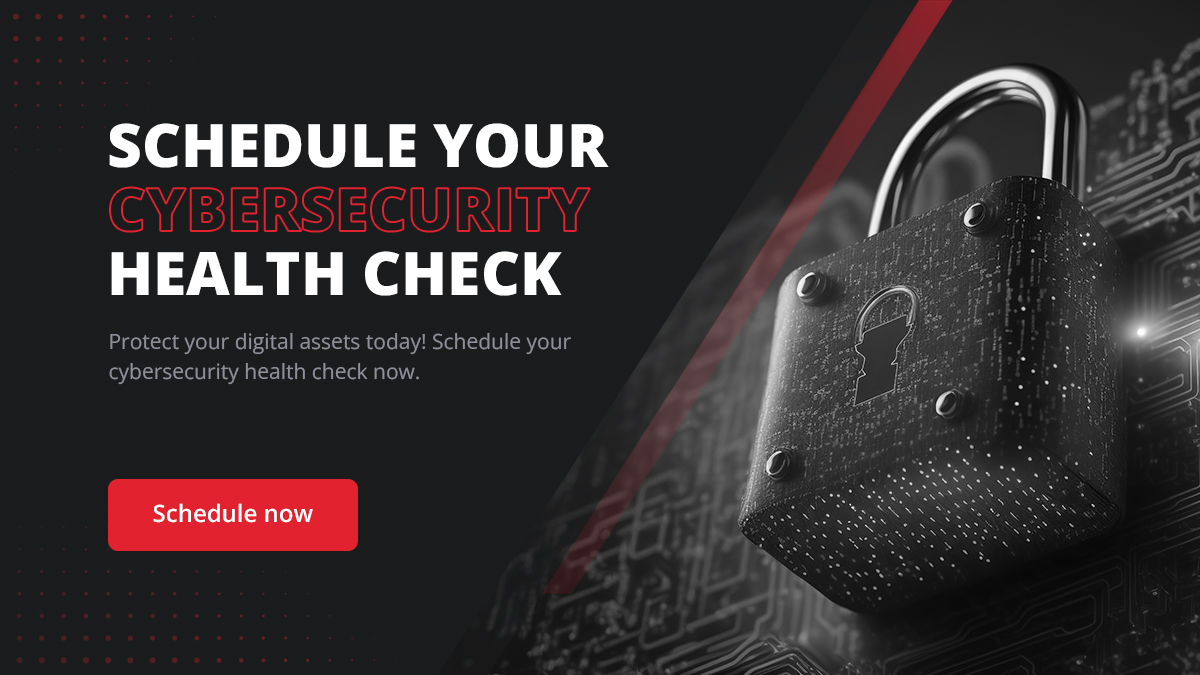
Conclusion
Robust endpoint security management is beneficial and essential for protecting organizational assets from the ever-evolving landscape of cyber threats. Effective endpoint security management encompasses many practices and solutions—from regular updates and patch management to advanced detection tools and encryption techniques—each playing a vital role in safeguarding sensitive data and intellectual property.
Organizations must adopt a multi-layered security approach that includes the latest technologies and strategies, such as Endpoint Protection Platforms (EPP), Endpoint Detection and Response (EDR), and Mobile Threat Defense (MTD), as well as foundational practices like training and awareness programs. Emphasizing preventive measures and rapid response capabilities ensures that enterprises can detect and mitigate threats efficiently and adapt to new challenges as they arise.
With its comprehensive suite of endpoint security solutions and strategic partnerships, RedZone Technologies is ideally positioned to assist organizations in navigating the complex cybersecurity environment. Contact Us now and let RedZone Technologies help you secure endpoints across diverse operational landscapes, ensuring businesses remain resilient in the face of cyber threats.
FAQs
Effective endpoint security management is crucial for safeguarding organizational data against cyber threats. Some frequently asked questions address common concerns and highlight the importance of robust endpoint security practices.
Can endpoint security management systems protect against zero-day attacks?
Yes, endpoint security management systems can provide protection against zero-day attacks, which exploit previously unknown vulnerabilities before developers can issue fixes. These systems leverage advanced technologies such as behavior-based detection and machine learning to identify and mitigate unusual activity that may indicate a zero-day exploit. While no security solution can guarantee 100% protection against all zero-day threats, modern endpoint security systems are designed to detect and respond to unusual patterns that escape traditional signature-based defenses, providing a significant protection layer.
How do endpoint security management systems handle encrypted threats?
Endpoint security management systems handle encrypted threats by employing advanced decryption capabilities that allow them to inspect the contents of encrypted traffic. This process involves intercepting incoming encrypted data, temporarily decrypting it, and scanning it for potential threats. If a threat is detected, the system can take appropriate action to block the malicious content before re-encrypting the data and sending it to its destination. This approach ensures that even threats hidden within encrypted traffic are identified and mitigated, safeguarding the network from sophisticated attacks designed to evade traditional detection methods.
How often should endpoint security policies and measures be updated?
Endpoint security policies and measures should be reviewed and updated regularly to adapt to the changing cybersecurity landscape. Ideally, policies should be assessed annually or whenever significant changes in the IT environment or threat landscape occur. Regular updates are necessary to incorporate new security technologies, address emerging threats, and ensure compliance with relevant regulations and standards. Additionally, continuous monitoring and real-time updates to endpoint security measures can help organizations avoid threats by quickly adapting to new vulnerabilities and attack techniques.
Why is Endpoint Security Management critical for remote and hybrid work environments?
Endpoint security management is particularly critical in remote and hybrid work environments where employees use multiple devices to access corporate resources from various locations. These environments expand the attack surface and introduce security challenges such as insecure networks and device theft or loss. Effective endpoint security management ensures that all devices, regardless of location, adhere to strict security policies and are monitored for potential threats. This includes employing VPNs, enforcing strong authentication methods, and using comprehensive endpoint protection solutions. These measures are essential for preventing unauthorized access and data breaches, ultimately protecting sensitive information in increasingly dispersed work environments.
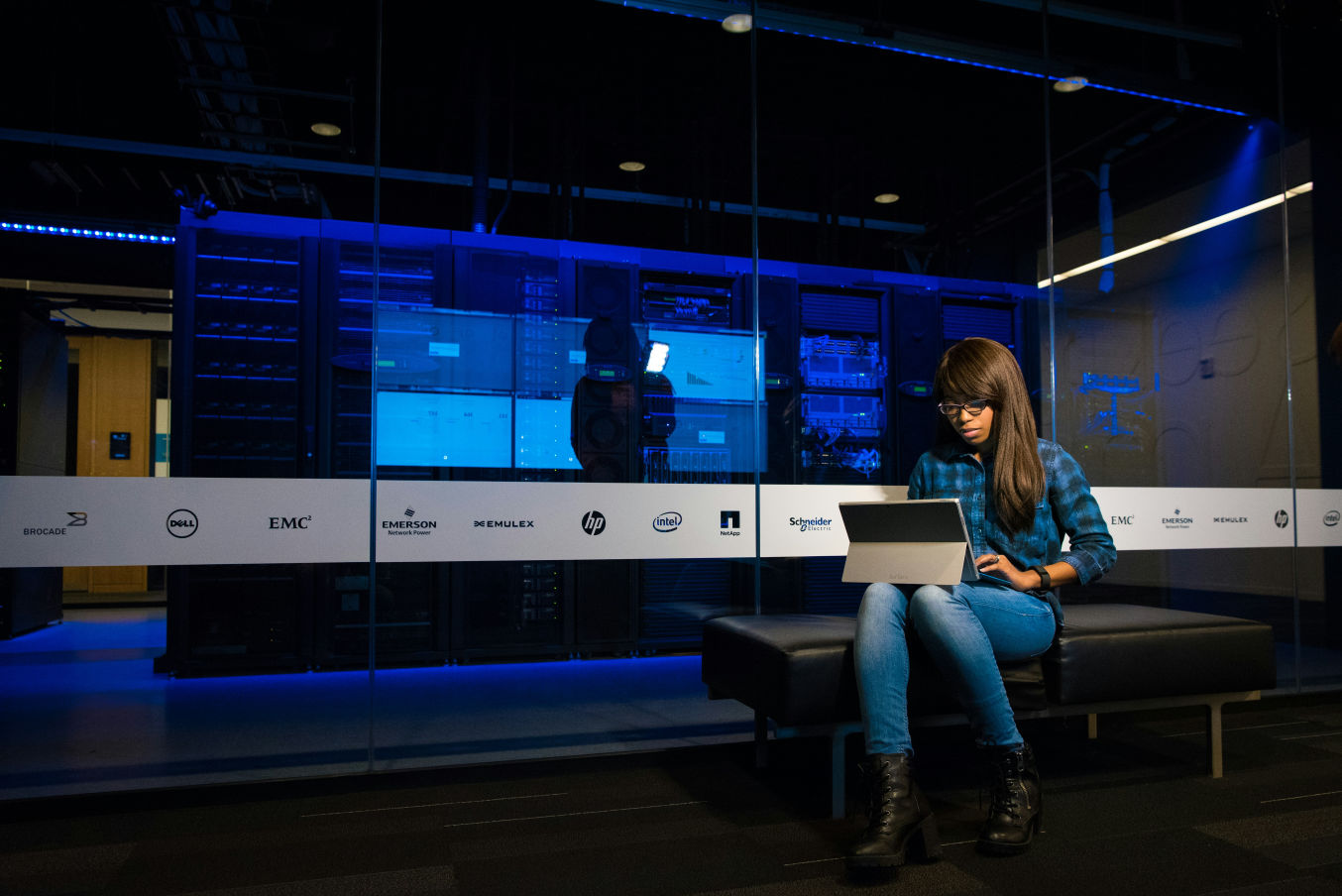 Security Updates
Security UpdatesUnderstanding IT Compliance: Scope, Benefits, and Challenges
Discover what IT compliance is, its importance, benefits, risks of non-compliance, frameworks, and how to achieve robust IT compliance in your organization.
 Security Updates
Security UpdatesImplement Secure Browsing with Powerful SSL Decryption
Explore the essentials of SSL decryption, its importance, challenges, and best practices for enhancing security and compliance for business in a detailed guide
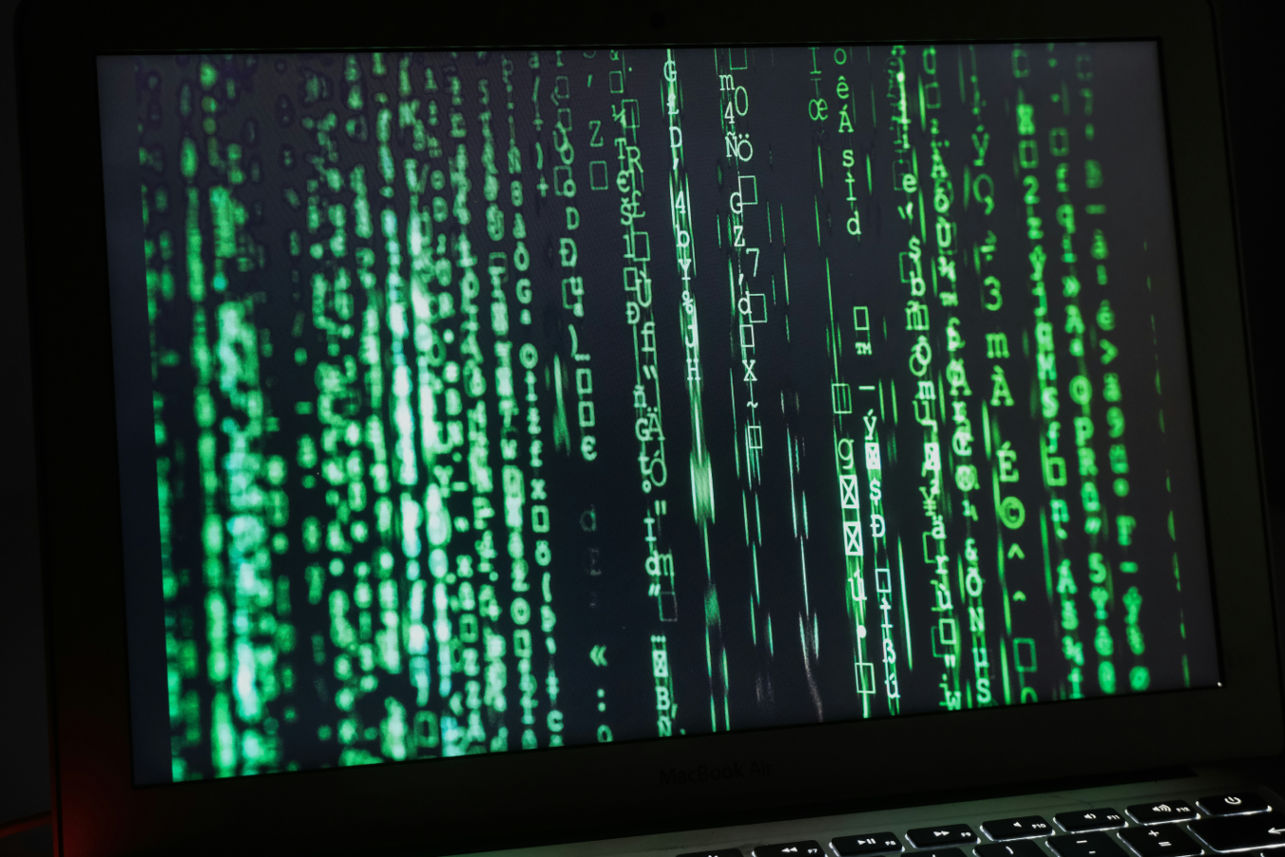 Security Updates
Security UpdatesTransitioning from Proxy Firewalls to Endpoint Security
Explore the evolution from proxy firewalls to endpoint security, enhanced threat detection, data encryption, and comprehensive protection for modern networks.
 Security Updates
Security UpdatesExpert IT Risk Assessment: Protect Your Business Today!
Mitigate potential IT threats with our comprehensive risk assessment guide, ensuring your digital infrastructure. Ensure your business is secure an...
 Security Updates
Security UpdatesEssential Guide to Best Practices in Compliance Security
Explore essential strategies for compliance security in this comprehensive guide. Learn about safeguarding your business and meeting regulatory sta...
 Security Updates
Security UpdatesSecure Your Data with Expert Cloud Database Solutions
Learn efficient solutions and secure your cloud databases with encryption and compliance features, ensuring data safety and privacy across all plat...
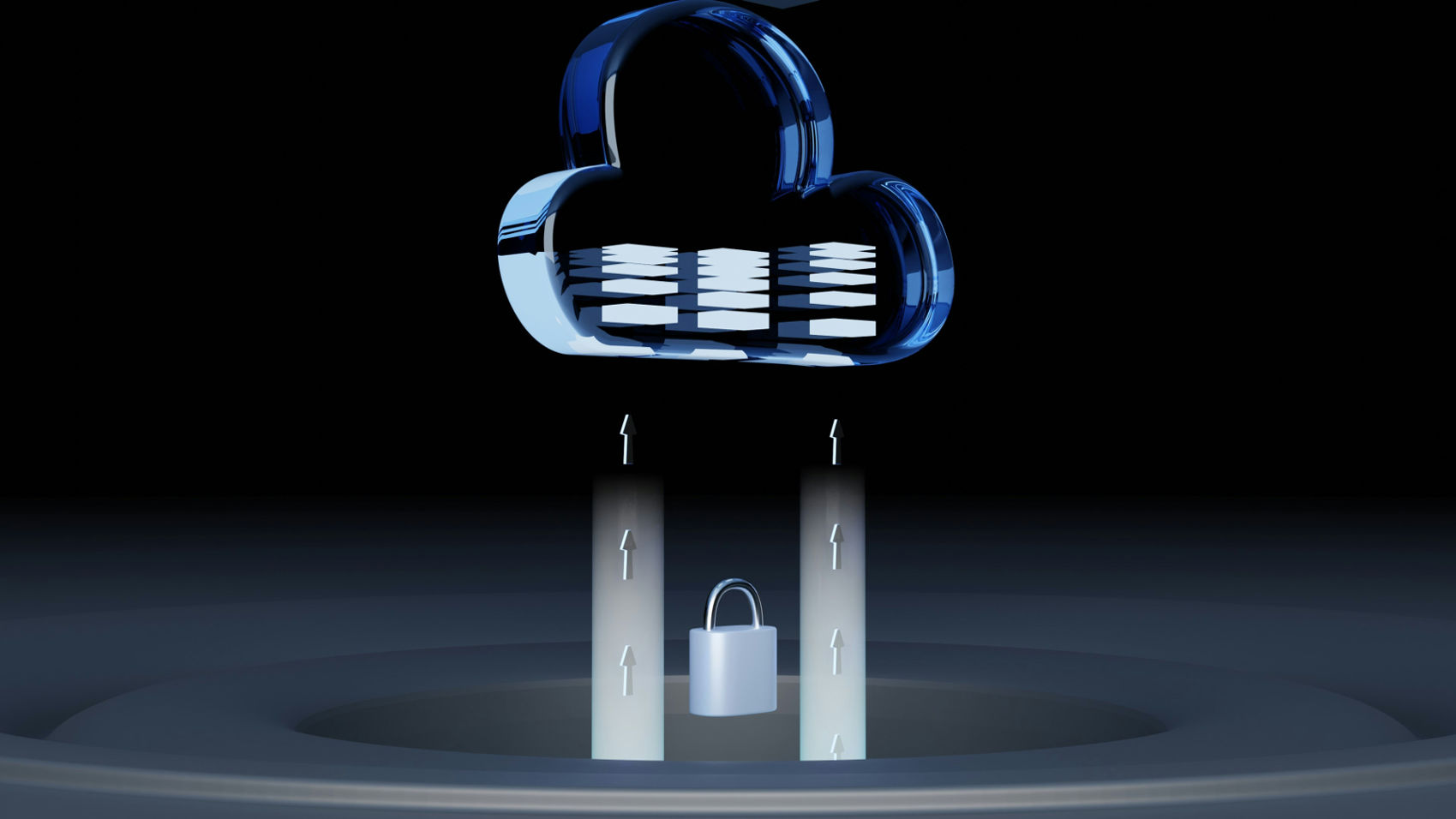 Security Updates
Security UpdatesA Guide to Cloud Network Technology: Benefits and Types
Unlock the potential of cloud network technology for seamless connectivity. Learn and scale solutions that drive business innovation and growth via...
 Security Updates
Security UpdatesAffordable Managed IT Services for Small Businesses
Explore top-managed IT services for small businesses to boost efficiency and security. Get expert insights and practical tips to optimize your IT o...
 Security Updates
Security UpdatesSecure Your Network with Gateway Security Solutions
Explore the essentials of gateway security: learn about its importance for network protection and best practices to safeguard your digital assets e...
 Security Updates
Security UpdatesDisaster Recovery Testing: Ensure Business Continuity
Explore effective disaster recovery testing strategies in this guide to maintain business continuity, prevent data loss, and minimize downtime duri...
 Security Updates
Security UpdatesMaximizing Security: Vulnerability Management Lifecycle
Explore the complete guide to the Vulnerability Management Lifecycle to boost your cyber resilience and secure your business IT infrastructure effe...
 Security Updates
Security UpdatesYour Network with Endpoint Security Management
Explore our comprehensive guide on Endpoint Security Management to understand its importance, how it works, and best practices for robust network s...
 Security Updates
Security UpdatesEnsuring Security Compliance: Tips, Insights & Strategies
Discover the essentials of security compliance, its importance, frameworks, and tools. Learn how to protect data and meet regulatory standards effe...
 Security Updates
Security UpdatesBoost Your Security with Internal Penetration Testing
Dive into internal penetration testing with our in-depth guide. Learn the essentials, techniques, and best practices to fortify your cybersecurity ...
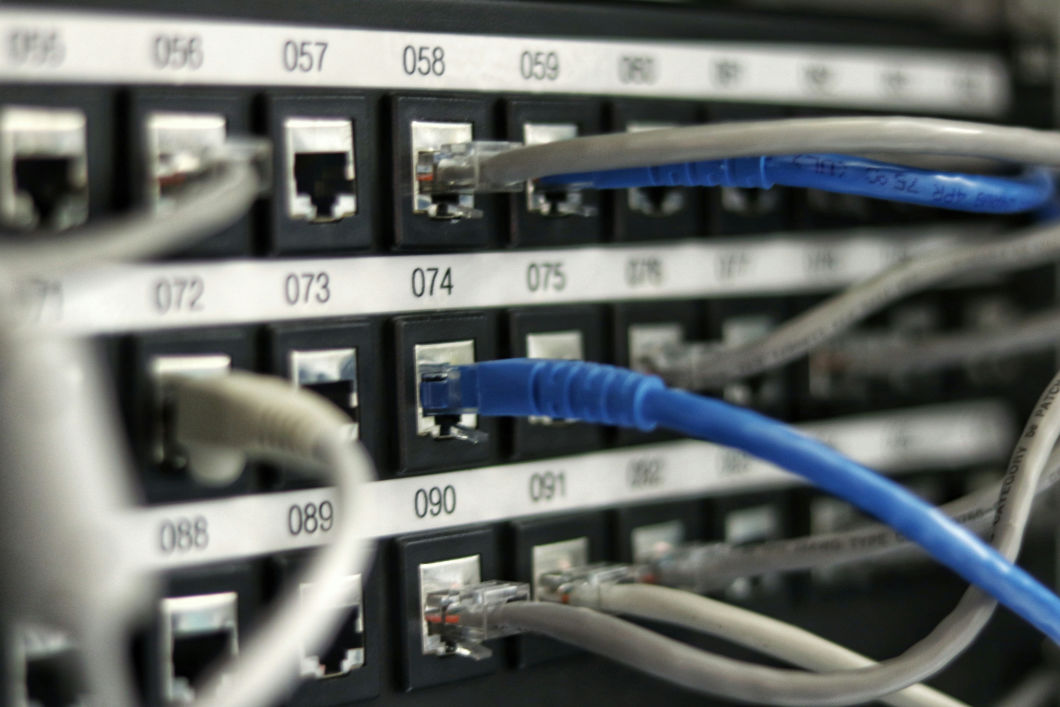 Security Updates
Security UpdatesEgress vs Ingress: A Guide to Data Traffic Management
Understand Egress vs Ingress in data management. Learn and explore their roles, traffic analysis, risks, and best practices for network and cloud s...
 Security Updates
Security UpdatesPrevent Credential Harvesting to Protect Your Precious Data
Understand credential harvesting. Learn how it works, common techniques, its impact, and strategies to prevent and mitigate attacks to secure your ...
 Security Updates
Security UpdatesSecure Your Big Data: Top Solutions for Data Security
Protect your valuable data with our robust big data security solutions. Learn about the threats and Safeguard against cyber threats and ensure comp...
 Security Updates
Security UpdatesSecure Your Network with Advanced Management Solutions
Explore the details of comprehensive network security management: Learn key strategies, best practices, and tools to safeguard your digital environ...
 Security Updates
Security UpdatesGuide to On-Path Attacks: Protecting Your Cybersecurity
Learn about on-path attacks in this comprehensive guide, exploring definitions, types, consequences, and key prevention strategies to safeguard you...
 Security Updates
Security UpdatesExploring Managed Cloud Services: A Comprehensive Guide
Dive into the Managed Cloud Services with our in-depth guide. Explore benefits, types, and best practices to enhance your business's cloud strategy...
 Security Updates
Security UpdatesComprehensive Guide to Ubiquitous Computing: Impact & Future
Explore the details of ubiquitous computing, from its core concepts and layers to its societal impact, key technologies, applications, and future p...
 Security Updates
Security UpdatesClone Phishing Explained: Detection and Prevention Guide
Discover how clone phishing works and its impact. Learn effective strategies to identify, prevent, and respond to these sophisticated email threats...
 Security Updates
Security UpdatesHow to Secure Your Business with Cyber Security Insurance
Explore the essentials of Cyber Security Insurance, covering its importance, types of coverage, benefits, and considerations for businesses in the ...
 Security Updates
Security UpdatesEfficient Data Spooling Solutions For Streamlined Operation
Learn How To Efficiently Manage And Store Your Data With Our Reliable Data Spooling Services. Keep Your Information Organized And Accessible With T...
 Security Updates
Security UpdatesMaximizing Compliance & Risk Management: Expert Strategies
Learn how to ensure business success with effective compliance and risk management strategies. Explore definitions, differences, frameworks, and ch...
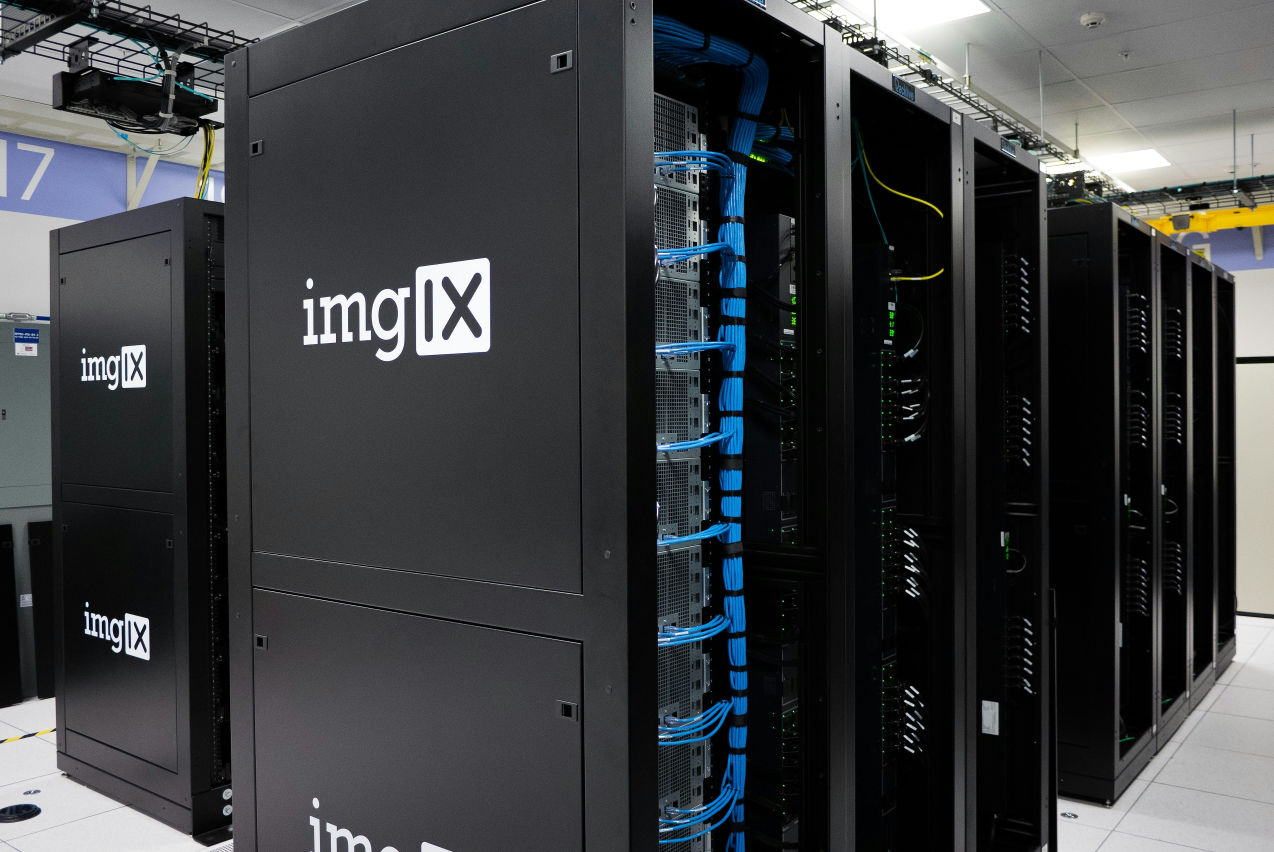 Security Updates
Security UpdatesUnderstanding MDF vs IDF: Key Differences & Benefits
Explore the crucial differences and examples between MDF and IDF in networking, understanding their roles, functions, and impact on network infrast...
 Security Updates
Security UpdatesRedZone Wins CRN's Top Security 100 & MSP 500 Awards 2024
RedZone Technologies earns CRN's Security 100 & MSP 500 Awards, affirming its leadership and innovative approach in the cybersecurity and IT manage...
 Security Updates
Security UpdatesJames Crifasi Speaks on Cybersecurity at Tech Conference
Join James Crifasi, CTO & COO of RedZone Technologies, at the Tech Conference as he explores cybersecurity's role in driving business growth and ad...
 Security Updates
Security UpdatesRedZone's James Crifasi Wins SonicWall's Technical Hero Award
CTO James Crifasi of RedZone Technologies earns SonicWall's Technical Hero of the Year, exemplifying unparalleled dedication to cybersecurity and I...
 Security Updates
Security UpdatesHow to Encrypt Email in Outlook
Learn how to encrypt email in Outlook with our step-by-step guide. Secure your messages using S/MIME, Office 365 Encryption OME, and add-ins for pr...
 Security Updates
Security UpdatesWhat Is Security Monitoring? Importance and Tools
Explore the importance of security monitoring, its key roles, types, and how it protects organizations against threats, ensuring compliance and pro...
 Security Updates
Security UpdatesServer 2012 R2 End of Life: Implications and Next Steps
Learn about Server 2012 R2 end of life: Understand its impact, key dates, risks post-EOL, and explore upgrade options and migration strategies for ...
 Security Updates
Security UpdatesProtect Personal Data: Smishing and Phishing Prevention
Know how to identify and protect against smishing and phishing attacks. Learn the techniques, types, and preventive measures for personal and busin...
 Security Updates
Security UpdatesSmurf Attack Guide: Prevention & Detection Strategies
Explore prevention & recovery from Smurf Attacks: Understand DDoS defense, detection signs, and secure network practices in our detailed cybersecur...
 Security Updates
Security UpdatesWhat is a Bad USB Attack, and How Do You Prevent It?
Learn about Bad USB attacks, their various forms, and strategies for safeguarding devices. Learn how to mitigate risks with effective prevention te...
 Security Updates
Security UpdatesKey Differences Between DOS Attack vs DDOS Attack
Explore the key differences between DDoS vs DoS attacks, their types, impacts, and prevention strategies in our comprehensive guide to enhance cybe...
 Security Updates
Security UpdatesUnderstanding the Impact of a Ping of Death Attack
Explore the ins and outs of Ping of Death attacks. Understand how they work, their impact on networks, and strategies to prevent them to keep your ...
 Security Updates
Security UpdatesThe Power of the Human Firewall: Your First Line of Defense
Discover the critical role of the human firewall in cybersecurity, combining employee vigilance with technology to protect against cyber threats ef...
 Security Updates
Security UpdatesStateful Firewall vs. Stateless Firewalls: What's the Difference?
Learn the key differences between stateful and stateless firewalls and how they protect your network. Discover the right choice for your security n...
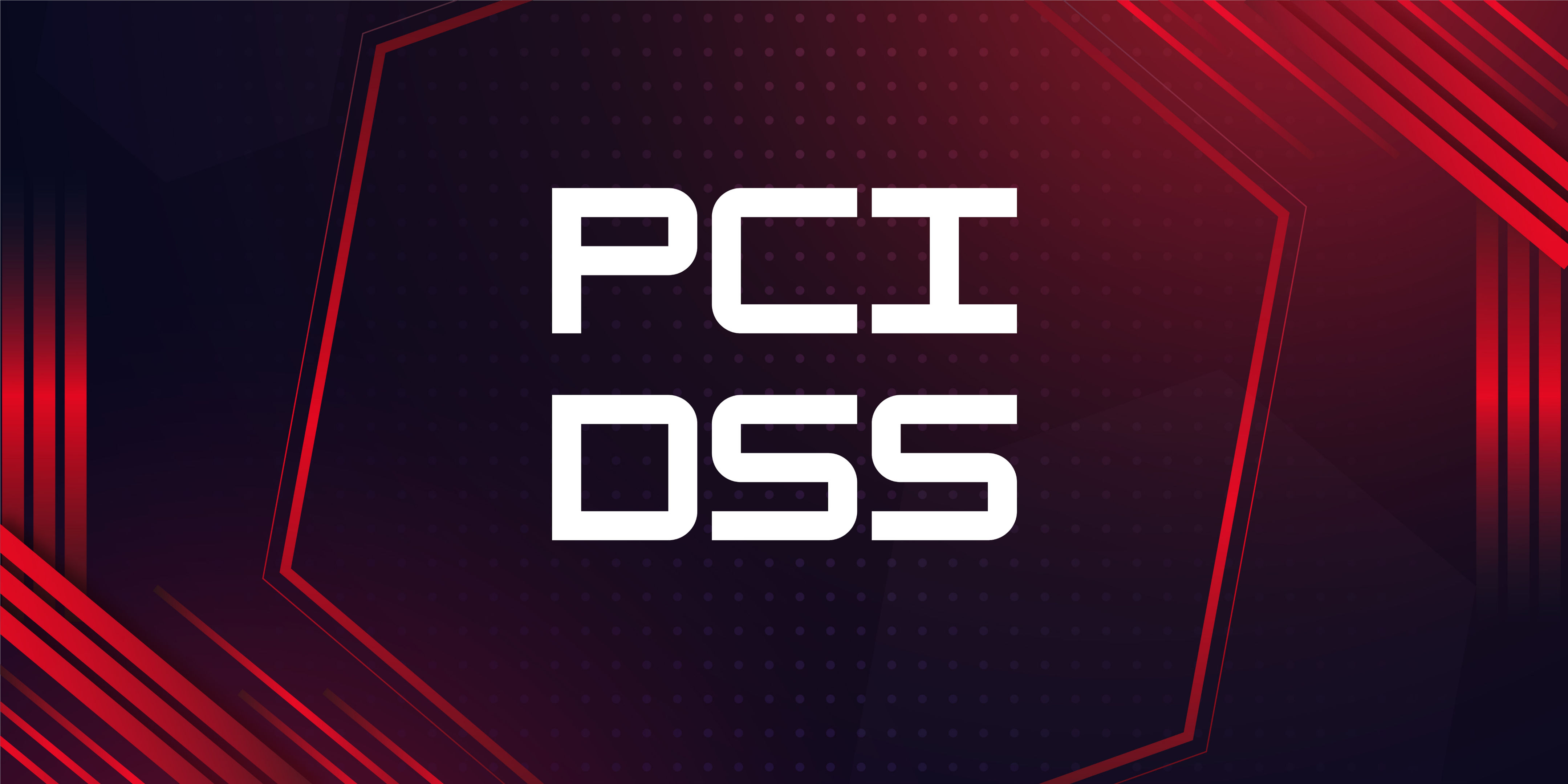 Security Updates
Security UpdatesUnderstanding the 4 Levels of PCI Compliance
Explore PCI DSS Compliance with RedZone: Key steps to protect card data and ensure secure transactions. Learn about compliance levels and tips for ...
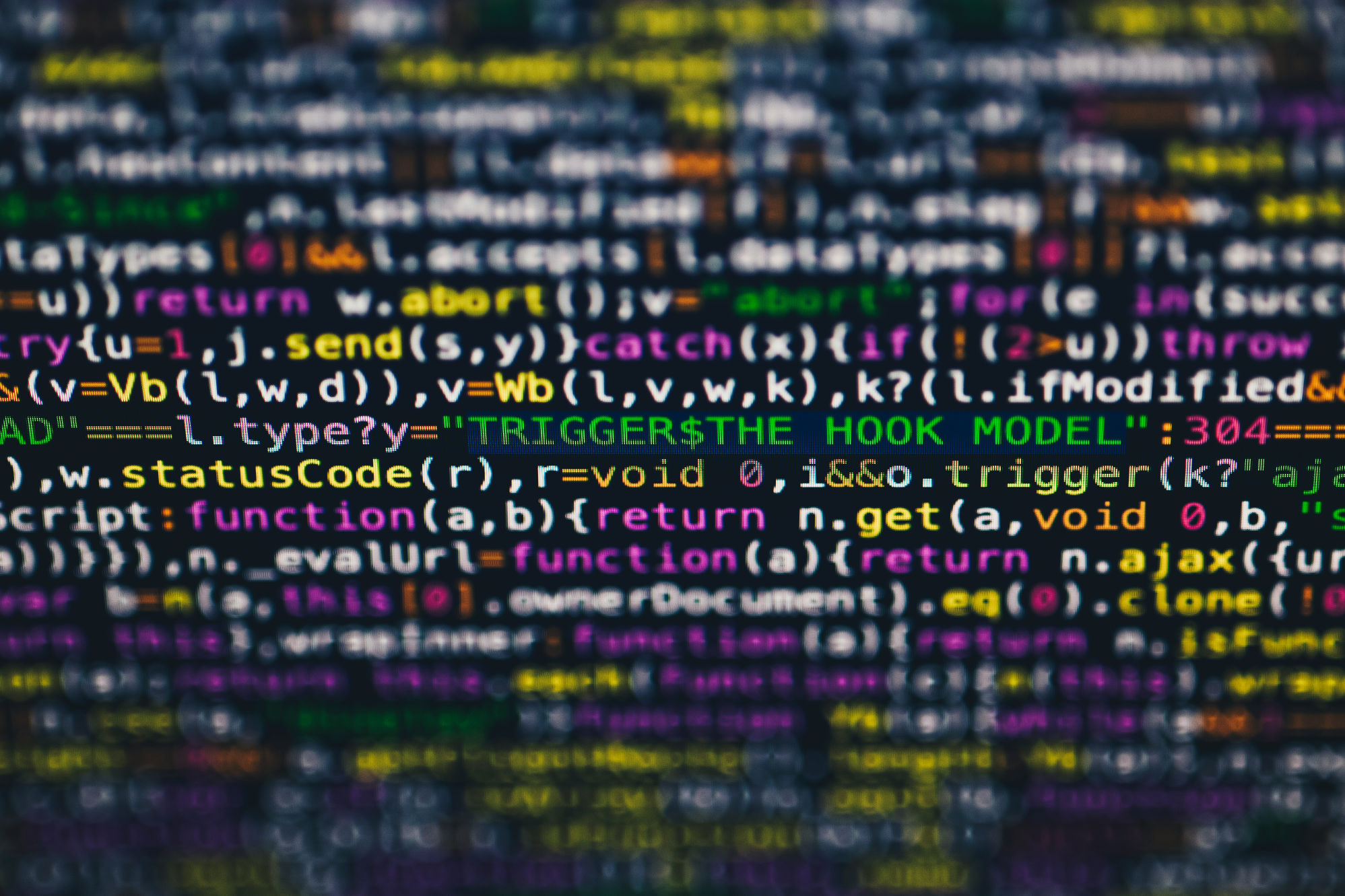 Security Updates
Security UpdatesWhat Is a Security Breach and How to Prevent Them
Learn how to effectively guard your business against security breaches with RedZone Technologies. Discover simple steps to keep your data safe and ...
 Security Updates
Security UpdatesUnderstanding Tailgating in Cybersecurity
Understand tailgating attacks in cybersecurity: what they are, how they work, and effective strategies for prevention to keep your business...
 Security Updates
Security UpdatesWhat is a Managed Service Provider and Its Benefits
Explore the role of Managed Service Providers (MSPs) in enhancing IT efficiency and cybersecurity for businesses, covering benefits, servi...
 Security Updates
Security UpdatesBreach Prevention: 5 Best Practices to Protect Your Data
Learn about data breaches: what they are, their impact, and how to prevent them. Explore best practices for securing your business against cyber th...






